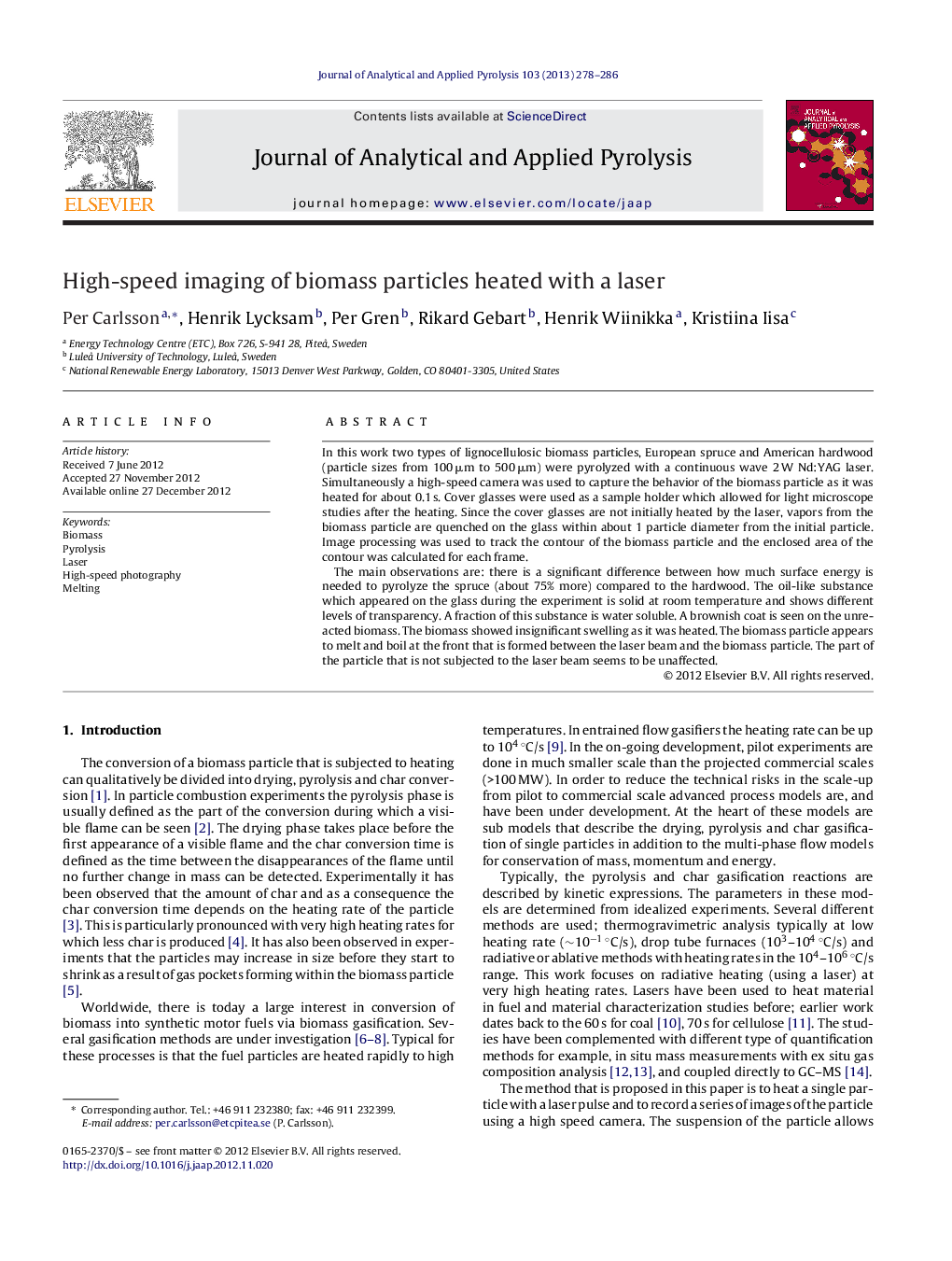| Article ID | Journal | Published Year | Pages | File Type |
|---|---|---|---|---|
| 1197198 | Journal of Analytical and Applied Pyrolysis | 2013 | 9 Pages |
In this work two types of lignocellulosic biomass particles, European spruce and American hardwood (particle sizes from 100 μm to 500 μm) were pyrolyzed with a continuous wave 2 W Nd:YAG laser. Simultaneously a high-speed camera was used to capture the behavior of the biomass particle as it was heated for about 0.1 s. Cover glasses were used as a sample holder which allowed for light microscope studies after the heating. Since the cover glasses are not initially heated by the laser, vapors from the biomass particle are quenched on the glass within about 1 particle diameter from the initial particle. Image processing was used to track the contour of the biomass particle and the enclosed area of the contour was calculated for each frame.The main observations are: there is a significant difference between how much surface energy is needed to pyrolyze the spruce (about 75% more) compared to the hardwood. The oil-like substance which appeared on the glass during the experiment is solid at room temperature and shows different levels of transparency. A fraction of this substance is water soluble. A brownish coat is seen on the unreacted biomass. The biomass showed insignificant swelling as it was heated. The biomass particle appears to melt and boil at the front that is formed between the laser beam and the biomass particle. The part of the particle that is not subjected to the laser beam seems to be unaffected.
► European spruce and American hardwood were pyrolyzed with a continuous wave 2 W Nd:YAG laser. ► A high-speed camera was used to capture the behavior of the biomass particle during the heating. ► Image processing and light microscopy was used to study the samples.
